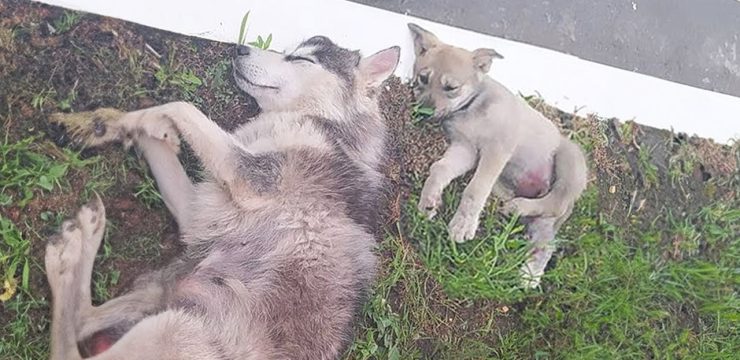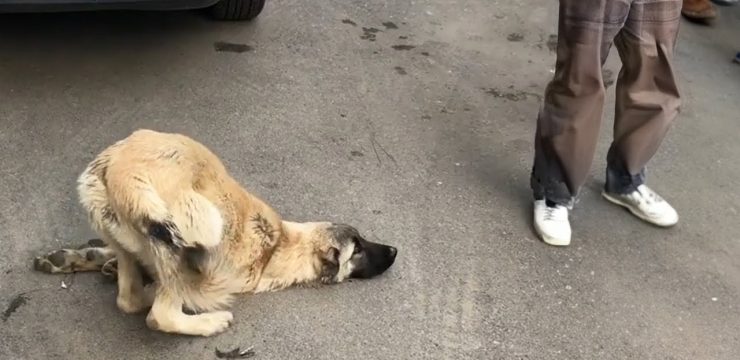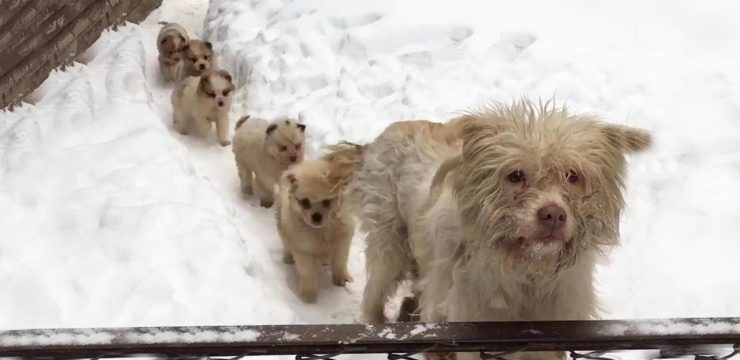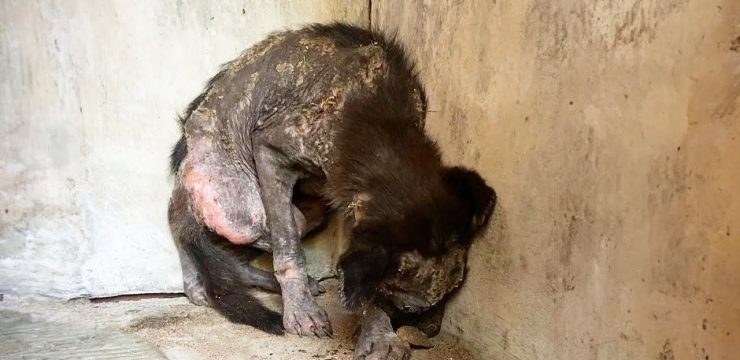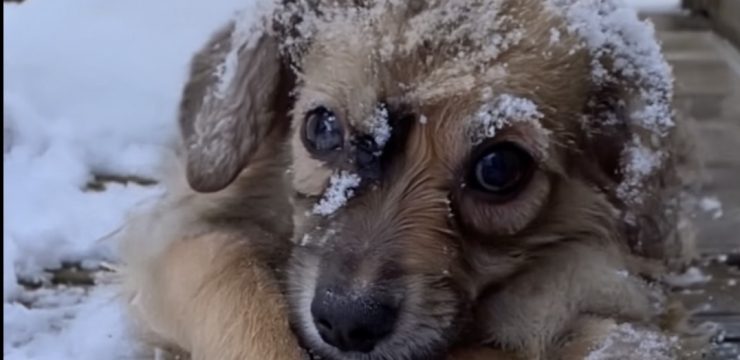Black bears are remarkable animals — strong, majestic, and symbolic of the wild beauty found in North America’s forests. Yet, for one young black bear cub, life took a tragic turn, one that brought him dangerously close to death. His story, however, is not just one of heartbreak — it’s a powerful testament to the compassion and dedication of those working in wildlife rescue.
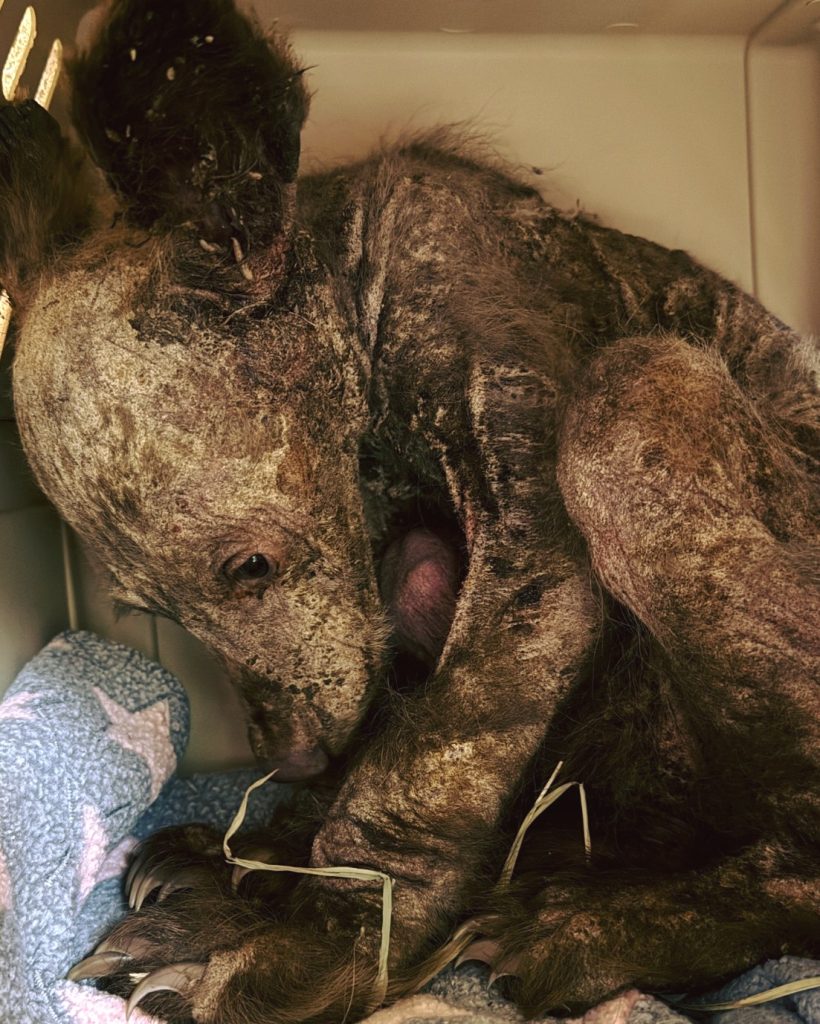
In December 2024, a call came in to the team at Gold Country Wildlife Rescue (GCWR) in North Auburn, California. It wasn’t unusual for the center, as they often respond to urgent wildlife emergencies, but this particular case hit especially hard. The report was about a bear cub in El Dorado County, found alone, weak, and on the brink of death. When rescuers arrived, what they saw broke their hearts. The cub was barely clinging to life, suffering from severe dehydration, malnutrition, and anemia. His fur was patchy and thin due to a serious skin infection, and he curled into himself in fear, too weak to respond to those trying to help. He sat quietly in his crate, staring at his own oversized paws — a haunting image of a baby animal who had endured more than he should have.
Chelsea Engberg, GCWR’s marketing and outreach manager, later shared with The Dodo, “It was heartbreaking to see a bear cub in such terrible condition.” This little bear had been orphaned at a vulnerable age, and without his mother’s guidance, he was unable to find food or stay healthy. His fragile state likely created a domino effect that rapidly worsened his health until rescuers intervened.
The GCWR team acted quickly. They began a full medical evaluation to assess the damage and develop a careful treatment plan. At just 20 pounds, the cub was dangerously underweight for his age, and it was clear his road to recovery would not be easy. Yet despite the odds, the staff was determined to give him a second chance. With expert veterinary care, round-the-clock attention, and plenty of patience, the healing process began.
In the first few weeks, progress was slow but steady. Then, small signs of improvement began to show — and they meant everything to the team. The cub’s face, once almost entirely bald, started to grow new patches of fur. To some, it might have seemed like a minor development, but for GCWR, it was a sign of hope. “While it might not seem like a big change, the fact that we are starting to see fur fuzz grow on his face is an exciting next step in his healing journey,” GCWR shared in a Facebook post.
As weeks turned into months, the bear’s recovery became more visible. Not only was his fur returning, but so was his spirit. He began to explore his enclosure more confidently and play with enrichment toys designed to stimulate natural behaviors — from a kiddie pool for splashing to a firehose hammock where he could lounge and relax. Importantly, the team kept their distance, avoiding excessive human contact to ensure that the cub retained his wild instincts — essential if he were to return to his natural environment.
By February 2025, the transformation was striking. The once frail and frightened cub now resembled a healthy young bear. “We are always amazed by the wild animals in our care, and this bear cub is one of the most amazing recoveries we have seen,” Engberg shared. He had become a symbol of resilience and the power of dedicated wildlife care.
Still, the question remained: what would his future hold? When The Dodo covered the story that same month, the team explained that the decision wasn’t up to them alone. The California Department of Fish and Wildlife (CDFW) would ultimately determine whether the cub was fit to be released into the wild or would require lifelong protection in a sanctuary.
Regardless of the final decision, everyone involved was committed to ensuring the cub’s safety and well-being. He continued living at GCWR while his final evaluations were completed. Staff members remained inspired by his progress and his ability to survive and thrive despite the trauma he had endured. “He was in such poor condition when he arrived that, in many ways, he didn’t even resemble a bear,” Engberg recalled. “The fact that he’s regrown so much of his fur and is remaining wild and not interested in humans is something that continues to make everyone at GCWR proud every day.”
Then, on May 13, 2025, GCWR shared an emotional update on Facebook, accompanied by a new photo of the cub. He looked completely transformed — strong, fluffy, and full of life. The update revealed that a final decision had been made: the bear would not return to the wild but instead be transferred to a permanent sanctuary where he would live safely for the rest of his life.
“If you’ve not seen this cub before, he came to us late last year sick, and almost completely without fur,” the post read. “He’ll be receiving his final exam and vaccination regimen soon, so he’ll be all ready to head off to his forever sanctuary home when they are ready for him. Stay tuned for more updates as things happen.”
Though it may be disappointing to some that the cub won’t return to the forest, his journey is far from a sad ending. On the contrary, it’s a powerful reminder of what compassion and teamwork can accomplish. From the brink of death to a new life full of promise, this bear’s story resonates deeply with anyone who believes in second chances.
Dana Fasolette, GCWR’s Director of Animal Care, summarized it beautifully: “His journey highlights the value of collaborative care in wildlife rehabilitation.” This black bear cub may never roam the wild again, but thanks to the kindness of strangers and the skill of professionals, he now has a future filled with safety, comfort, and dignity — a future he fought hard for and undoubtedly deserves.
